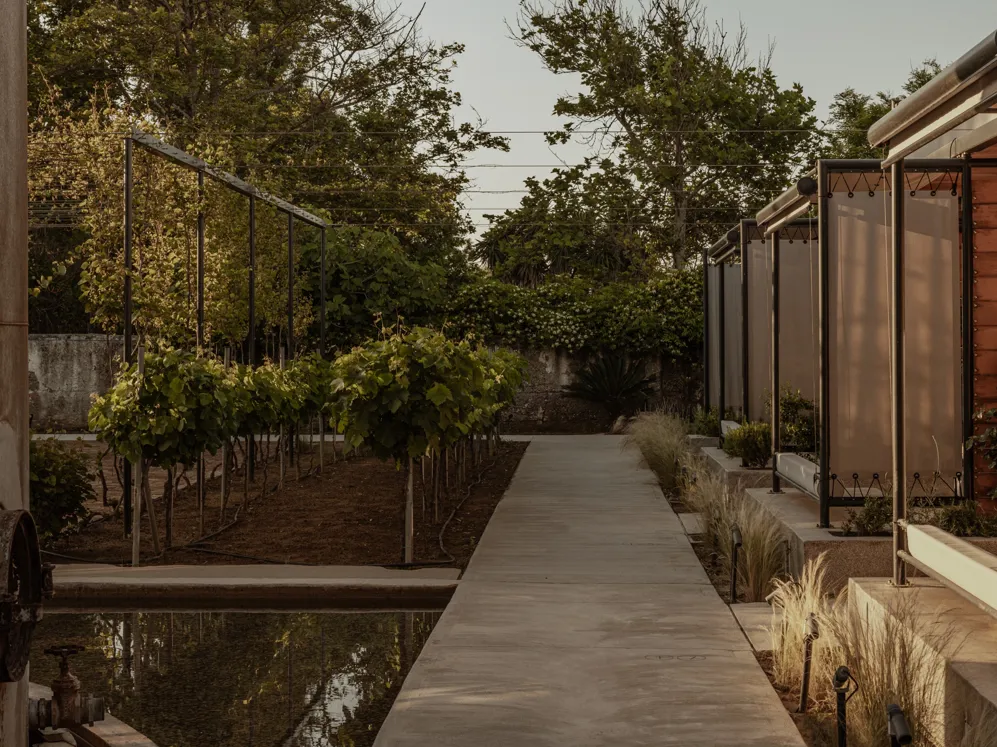
Words Vidula KotianDate 13 August 2025
Their work has helped shape a new era of Greek hospitality: one that balances narrative with restraint, and tradition with clarity. This ethos is embodied in three distinct member hotels across Greece. In Athens, Perianth offers modernist calm in the heart of the city, just steps from the Acropolis. On the Peloponnesian coast, Dexamenes transforms a 1920s wine factory into a raw, poetic seaside retreat. High in the fir forests of Arcadia, Manna reimagines a half-finished sanatorium from the 1930s as a soulful mountain hideaway.
We spoke with Dimitris about K-Studio’s sensitive approach to architecture and atmosphere, exploring the studio’s origins, reuse, and design decisions that allow each place to lead the way.
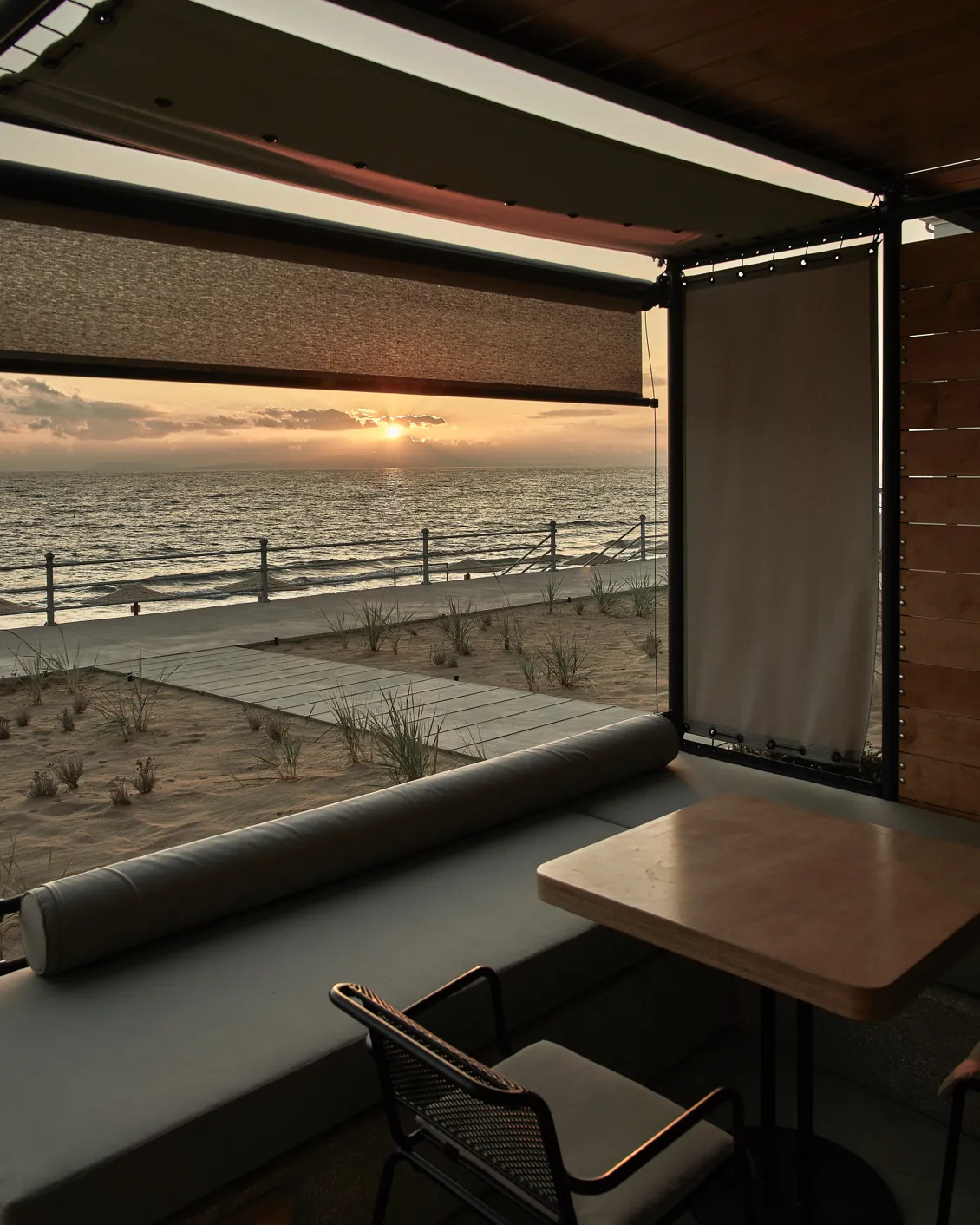
At Dexamenes, the studio considered not what to build—but how little
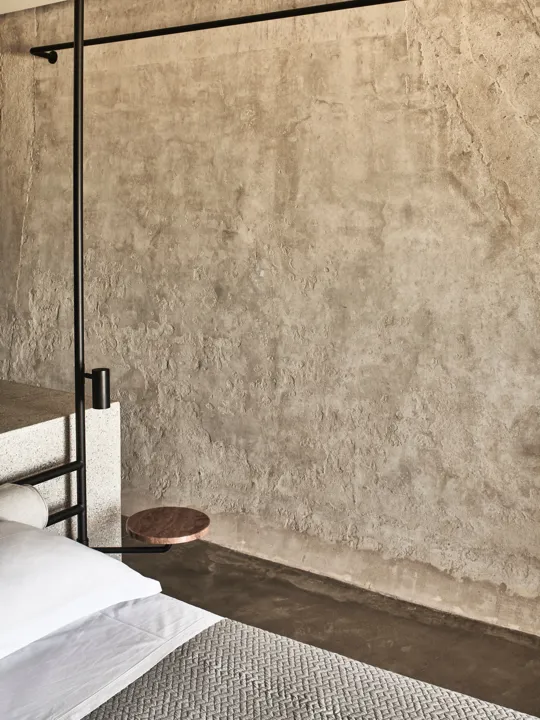
The century-old patina was treated like gold
My brother and I grew up in a family of developers, often visiting construction sites and being drawn to the creative energy of those spaces. That exposure sparked an early interest in making things. But beyond the act of building, we were curious about the why—why choose to make one thing over another? Architecture offered that lens. It wasn't just about how to build, but what to build and why.
We studied in London, where design is governed by a clear value system—very similar to branding. Creating identity within a framework resonated with us. Architecture, to us, became a way of thinking, not just a technical process.
When we started our studio, our focus was on shaping identities, regardless of scale or whether a project was new or adaptive reuse. Especially in leisure spaces—restaurants, beach bars, places that thrive on character—we found opportunities to craft experiences, not just buildings.
We became interested in the layers that activate a space—objects, gear, ambiance. Sometimes, it's not the building that defines a place, but a tree, a rock, music, light, or a bit of smoke. That shift in thinking pushed us beyond traditional architecture.
It also led to more sustainable, efficient choices. Building is resource-heavy. Sometimes, doing less—using tents, or arranging olive trees in a circle—achieves more. Many of our projects start with that question: how much do we really need to build?
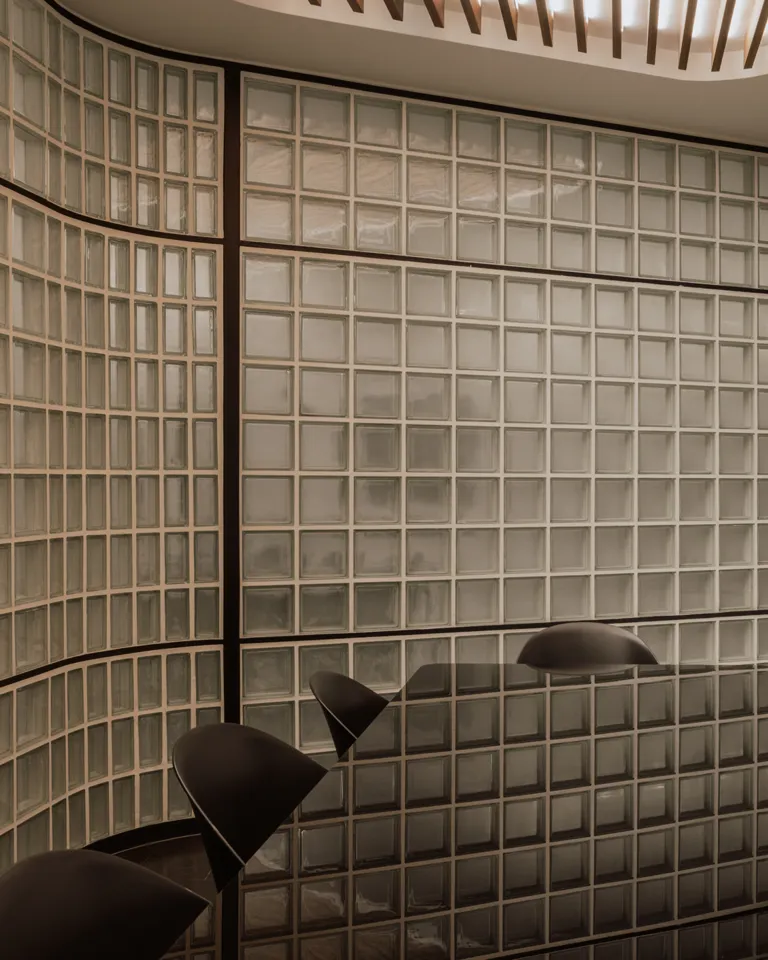
Perianth honors its heritage with soft curves and industrial edge
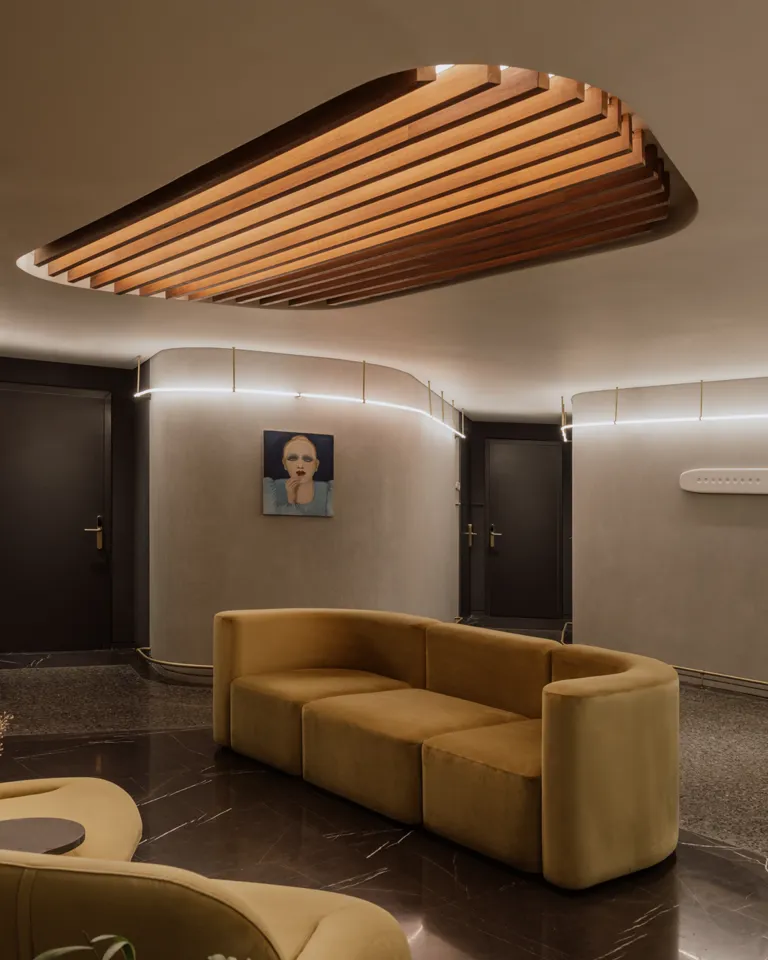
Inside, Art Deco elegance meets crisp contemporary design
In a way, yes. One pivotal moment was a project for a 100-year-old vineyard, where a spirits company asked us to design a museum. The brief called for a large building, but standing in that landscape, we felt the vineyard itself was the experience. So instead of creating something dominant, we proposed a series of subtle interventions—small structures scattered through the vines, inviting people to sit, walk, and dwell. It became an architecture rooted in agriculture—reshaping the land gently, using local stone, respecting what was already there. Sometimes, a few trees or a pergola can do more than a whole building.
That realization carried into projects like Alemagou, a beach club on windswept northern Mykonos. Instead of resisting the elements, we embraced them—hanging reed panels that sway with the breeze, creating shade and a calming rhythm. It felt spontaneous, natural. Then Barbouni in Costa Navarino used fabric to echo the sea’s movement. I remember being there after it opened—watching a little boy fascinated by the fabric on the ceiling as he tried to eat pasta, his mother just watching too. No phones, just presence. That small moment meant a lot.
Later, Scorpios—with Claus, the founder of Design Hotels—took those early instincts further. It wasn’t about dragging a vision across the line—it was about building something together, with shared values and curiosity. That project gave us clarity and confidence: design isn’t just about what you build, but why, how, and what it feels like to be there.
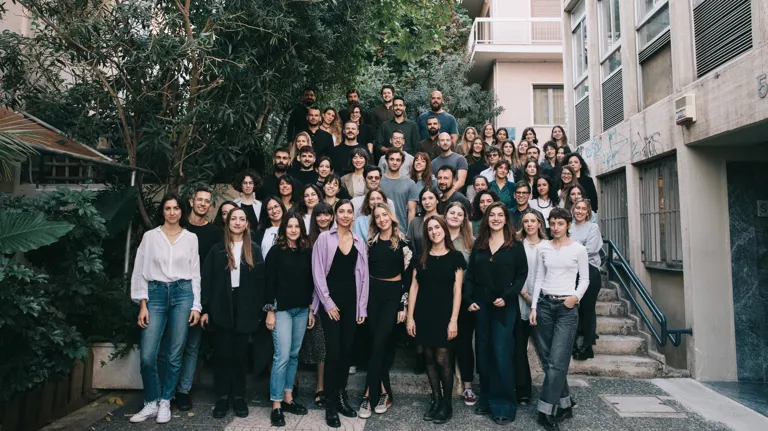
Now 110 strong, K-Studio spans everything from master planning to product design
As Greeks, we carry an ingrained understanding of daily pleasure—it’s not about waiting for holidays, but finding joy in the everyday. That perspective shapes how we approach leisure design. In London, we noticed the contrast—drinks after work felt like escape. But in Greece, a walk can be restorative, simply because it takes you past a bakery you love, or offers a beautiful view. That kind of slow, sensory experience is what we try to design for: architecture that lets you breathe, pause, and connect.
I live in Athens with my British wife. We often host friends from abroad, and even when we walk the same neighborhood routes, we see them differently. When you're in holiday mode, you move slower. You stop at a bench, notice the light, soak it all in. That shift in mindset is powerful—and it’s exactly what we aim to enable through design.
Being Mediterranean and European also means we’re steeped in layers of culture and history. That comes with a deep respect—so many smart people came before us, with ideas worth learning from. Culture isn’t static; it evolves. And as designers, we try not to preserve it in a jar, but to engage with it dynamically.
Today, our studio has grown to 110 people. We're based in Athens, but 70% of our work is abroad—across Europe, the Middle East, and Southeast Asia. We always begin by listening to the place, understanding its nature and its people. Sometimes what belongs most isn’t something that blends in—it’s something bold and deliberate. Like an exclamation mark in a sentence—it stands out, but feels right when placed with care.
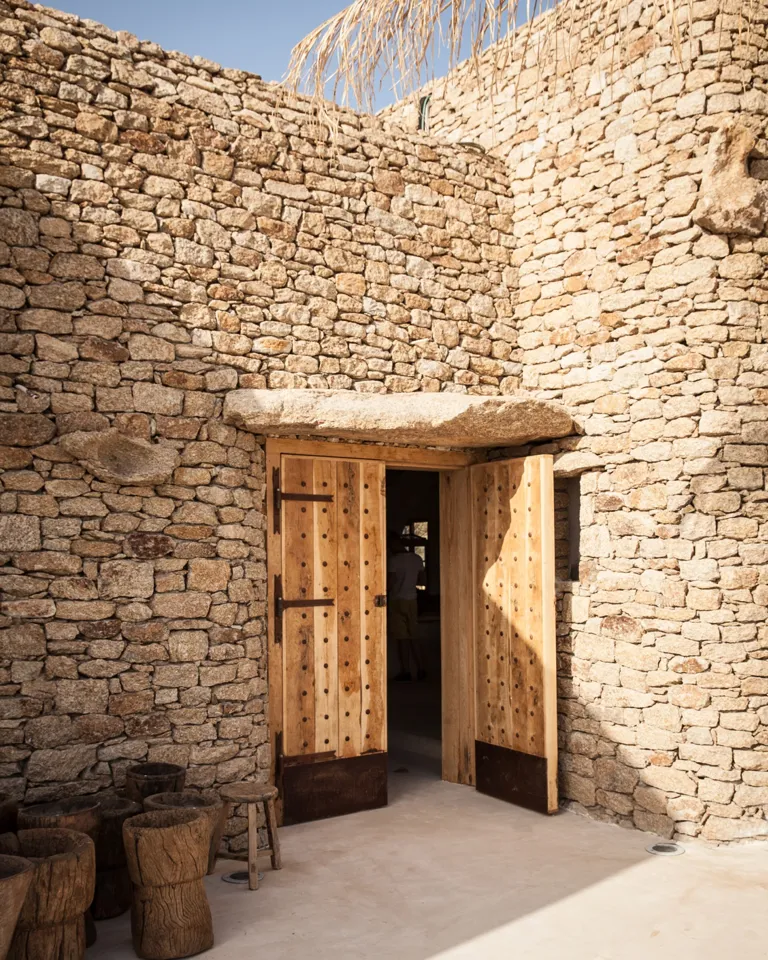
Scorpios cemented K-Studio’s creative voice
Barbouni lets the Ionian speak—in waves, wind, and fabric
When people think of Greece, they usually picture the islands or the Parthenon—rarely the mountains. These three properties offer a chance to show a fuller spectrum: urban depth, unexpected stillness, and coastal rawness. Perianth grounds you in the layered city of Athens. Manna offers a breath of mountain air in a setting more often associated with Central Europe. Dexamenes brings you to the sea, but through an industrial, unpolished lens. Together, they create a journey through contrast.
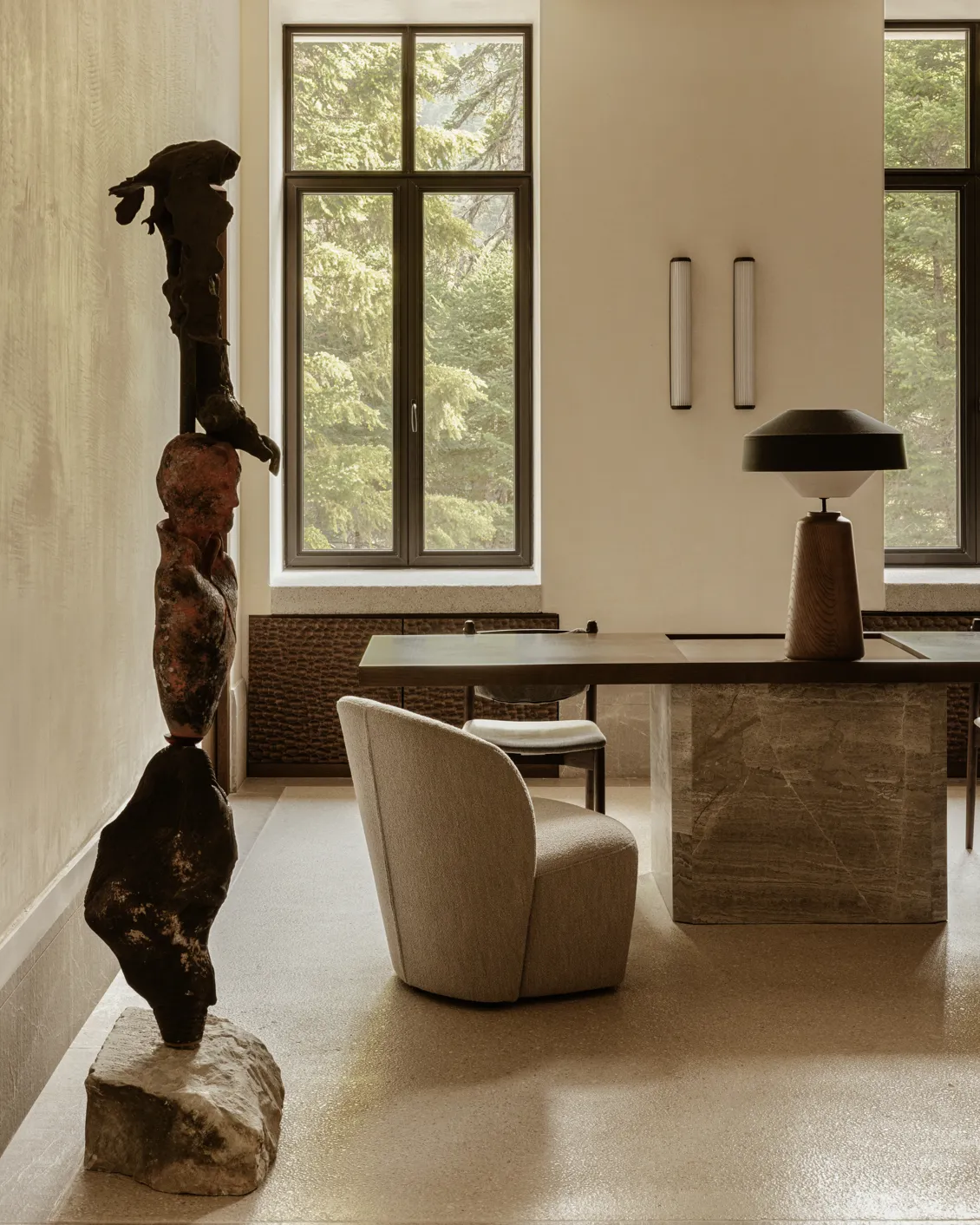
The architects preserved every salvageable detail
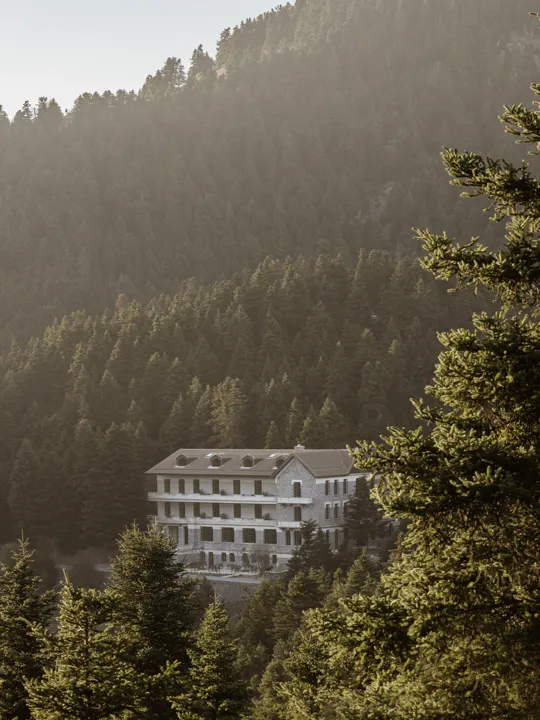
Manna’s evolving facade was left intact, honoring its journey toward simplicity
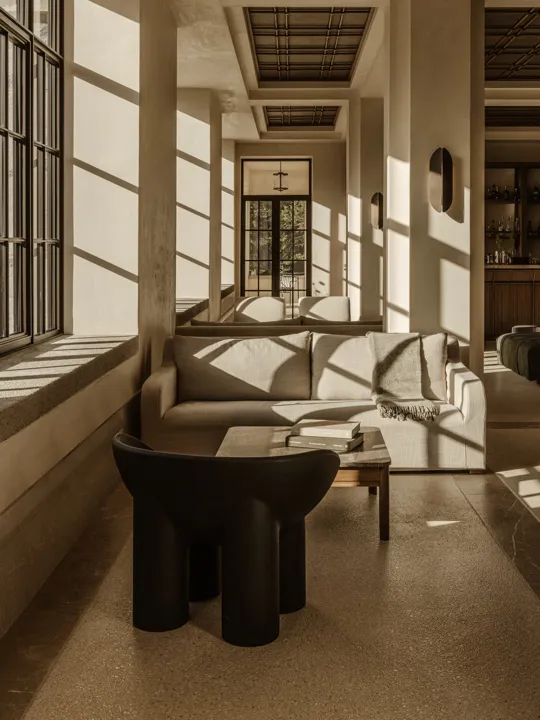
Each of the buildings dates back to the 1930s, and each came with its own set of challenges.
In Athens, heritage protections shaped what we could do at Perianth—we had to preserve the façade, but the interior was empty. We didn’t want to fake history. Instead, we created a clear contrast: respectful on the outside, fresh and geometric inside, inspired by but not confined to the past.
Dexamenes had no such protections—yet we treated it as if it did. The aged concrete was like gold—its patina, formed over a century, the most valuable material on site. We designed our cuts around how we’d reuse each piece. It became a study in reuse, where structure and story carried equal weight.
Manna sat somewhere in between. It was a listed heritage building, but the structure had deteriorated over time—only half of the original plan was ever built. Rather than “finish” what was never built, we embraced its asymmetry. We reused original materials, preserved what was salvageable, and avoided reconstructing lost ornamentation—letting the patina of incompletion speak. Even the new wing followed the rhythm of the old without copying its language.
In the end, each project respected place in its own way—not through replication, but through an honest dialogue with what was there.
Dexamenes demanded preservation, not demolition —like the old silos that now define its character
I’m lucky to find happiness in the everyday. My walk home from the office has become a ritual—I’ve carved out a route with a glimpse of the Acropolis, and I always pause there. There’s a bakery I pass, where I pick up bread and nibble on the way home (I’m not that strong!). Then there are the unexpected moments—bumping into a friend, making spontaneous plans. That kind of connection and lightness feels like happiness to me. It’s not a curated moment for a photo; it’s something that lives in the rhythm of daily life. The more that feeling carries through—at work, at home, on holiday—the closer you are to real, lasting joy.
I don’t think I have one, which feels quite freeing. There’s something about the word possession that implies worry—something you’d be afraid to lose. I don’t feel that way about objects. Of course, I can’t imagine life without my family, my brother, or the people I work with. Maybe practically, it would be my phone—but that’s a bit depressing, isn’t it? So, yes, it's useful, but not treasured in that deeper sense.
Discover K-Studio’s philosophy in person on the upcoming Design Anthology Trip, visiting all three properties across Greece.